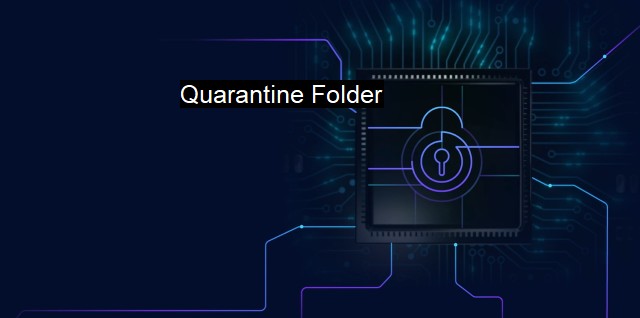What is Quarantine Folder?
Securing Your Digital World: The Importance of Quarantine Folders in Cybersecurity and Antivirus Software
The term "Quarantine Folder" is thrown around quite frequently in the realm of cybersecurity. not everyone understands its key role in preserving the sanctity of their computer systems, or how it works to prevent malicious software from causing chaos. In the simplest sense, a Quarantine Folder is a specified location within an antivirus program where suspicious files can be detained and analyzed without the danger of contaminating the rest of your computer's system.When someone mentions a quarantine in a healthcare or biological context, perhaps the scenario that comes to mind is a-separated room or a designated area where those suspected of having contagious diseases are placed to prevent the transmission to the unaffected individuals. Similarly, in the cybersecurity context, antivirus programs use a feature named the quarantine folder to isolate suspicious or contaminated files away from the normal directories and files.
The quarantine folder comes immensely in handy when an antivirus detects potential threats that aren't necessarily harmful but could be potentially malicious under specific circumstances. The placement in the quarantine folder translates to the immediate halting of operations of the suspected file. The suspected harmful file is cordoned off, thus ceasing its possible interaction with other non-infected files or the operating system of the computer. This minimizes the risk of spreading malicious software and causing damage to your digital property.
One critical aspect of the quarantine process involves restriction on actions which can be performed on quarantine files. The file, while in this quarantine state, is rendered incapable of being executed or processed further. This translated containment buys the antivirus software, necessary time to probe into the suspect file. It follows a drill-down procedure, breaking down the file to its simplest forms in a bid to detect potential harmful counterparts.
This restrained position also avoids reckless deleting of pseudo-harmful files that have landed in the quarantine folder due to a false positive. Sometimes, the antivirus might mistake a benign file or software for a malicious one. If the suspected file or software is immediately deleted, it could disrupt the user's operation if it was indeed a false positive. Therefore, the quarantine folder serves as a necessary "purgatory" for files, allowing the user to review these files before making a final decision to delete them or not.
The quarantine folder also allows the user to submit false positives to the antivirus developer. This process helps improve the accuracy of the antivirus software and minimizes false positives in future pins. Users can restore files to their original locations if they're proven not to be threats. Equally, infected files can be kept in quarantine until the antivirus develops or downloads a remedy to neutralize them, or until the user decides to delete them.
The quarantine folder is an essential defense mechanism in modern antivirus software. Its role as a holding area provides a safe way for potential threats to be probed and handled in a controlled environment. This contingency protocol substantially limits the potential malicious files from wreaking havoc by curbing their freedom and spread. It gives cybersecurity experts and regular users, a poisoned chalice negotiation avenue, minimizing total system infection. Therefore, the quarantine folder is among the robust layers of protection bestowed by antivirus software to guarantee cybersecurity. While some users might view its operations cynical or invasive, it remains a critically essential line of defense in any robust cybersecurity strategy.

Quarantine Folder FAQs
What is a quarantine folder in cybersecurity?
A quarantine folder is a secure location where files suspected of being infected with malware are placed to prevent the spread of the virus.How does a quarantine folder work in antivirus software?
When antivirus software detects a file that may contain a virus, it moves the file to the quarantine folder. The file is isolated from other files on the computer and is prevented from running until it can be inspected more closely or deleted.Can files in the quarantine folder be recovered?
It depends on the antivirus software being used. Some software allows users to restore or retrieve files from the quarantine folder, while others do not. It is important to check the settings of your antivirus software to determine if this is an option.Why is it important to regularly check your quarantine folder?
Regularly checking your quarantine folder can help ensure that all infected files have been successfully removed from your system. It is also important to check to see if any files have been mistakenly flagged as malware and moved to the quarantine folder, which can then be restored to their original location if necessary.| | A | | | B | | | C | | | D | | | E | | | F | | | G | | | H | | | I | | | J | | | K | | | L | | | M | |
| | N | | | O | | | P | | | Q | | | R | | | S | | | T | | | U | | | V | | | W | | | X | | | Y | | | Z | |
| | 1 | | | 2 | | | 3 | | | 4 | | | 7 | | | 8 | | |||||||